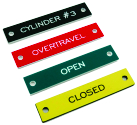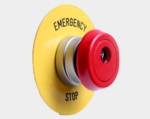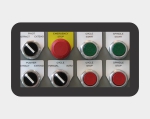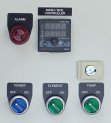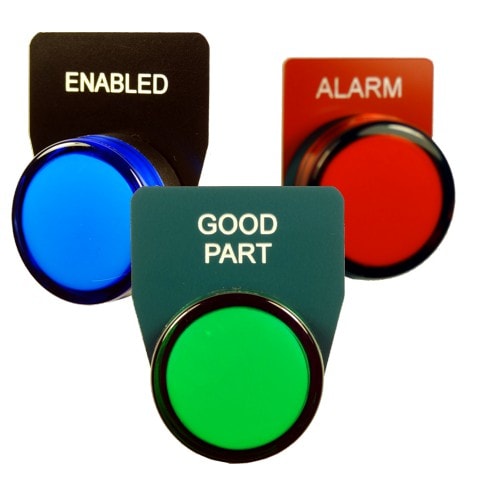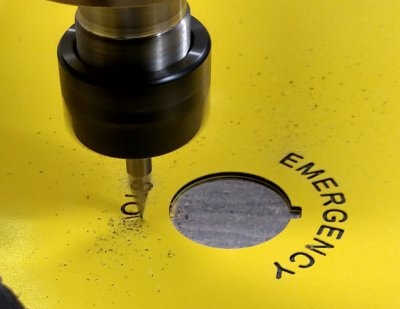Phenolic labels and tags have long been used in industrial settings for their durability and resistance to extreme conditions. Today, modern acrylic-based engraving stock has largely taken over that market, being use in everything from warehouse signage to OEM equipment tags.
In this guide, we’ll break down the differences, explore their applications, and help you decide which material suits your needs best.
Fact is, the vast majority of "Phenolic Labels" in the field are actually made from an Acrylic Based Plastic Engraving Stock.
Advantages of Acrylic Engraving Stock
- Typically 1/16" thick
- Front engraved with Your Text
- 3M Peel and Stick Adhesive Applied
- Fast lead time, great price
- Use Indoors or Outdoors
- Stock availability
- Allows detailed engraving for logos and diagrams
The term Phenolic is often used to refer to any layered plastic. Actually, phenolic is a very specific, resin-based material. It is no longer widely used for signage in General Manufacturing. Modern acrylic based plastics have taken over that market. Almost always, if a specification calls out Phenolic they are really needing Plastic. Consult your Engineer or contact us if you are not sure.
True Phenolic is still used in some very specific applications. See our chart below.
Phenolic labels in High-Voltage Applications
While acrylic-based engraving stock dominates most modern labeling needs, phenolic labels remain a go-to choice in specialized markets, particularly where very high voltages are involved. Phenolic’s resin-based composition offers exceptional electrical insulation, making it ideal for environments like electrical substations, power plants, or industrial equipment operating at thousands of volts. Unlike acrylic, which conducts electricity to a slight degree, phenolic’s near-zero conductivity ensures safety and compliance in these critical settings.
For example, phenolic nameplates are often specified in military or aerospace applications under MIL-SPEC standards, where equipment must withstand extreme electrical stress without compromising performance. However, this comes at a cost: phenolic’s higher price, longer lead times (often 2-4 weeks), and lack of UV stability limit its use to indoor, high-stakes scenarios. If your project involves high-voltage systems, consult your engineer to confirm phenolic’s necessity—otherwise, acrylic’s versatility might still win out.
Comparison of Acrylic and Phenolic Labels
| Standard Plastic | Textured Plastic | Phenolic | |
|---|---|---|---|
| Price | |||
| UV stable for Outdoor Use | |||
| Online Ordering | |||
| Detailed Engraving | |||
| Stock Colors | 13 | 6 | 4 |
| Temperature range | Good | Better | Best |
| Near Zero Electrical Conductivity | |||
| Chemical Resistance | |||
| Wear Resistance | Good | Best | Good |
| Flexibility | Flexible | Somewhat Flexible | Very Rigid |
| Edges | Square | Square | Beveled |
| Engraving Method | Laser | Laser | Rotary Tool |
| Mounting Method | Peel and Stick or Fasteners | Peel and Stick or Fasteners | Fasteners |
| Lead Time | Usually 1-2 days | Usually 1-2 days | 2-4 weeks minimum |

